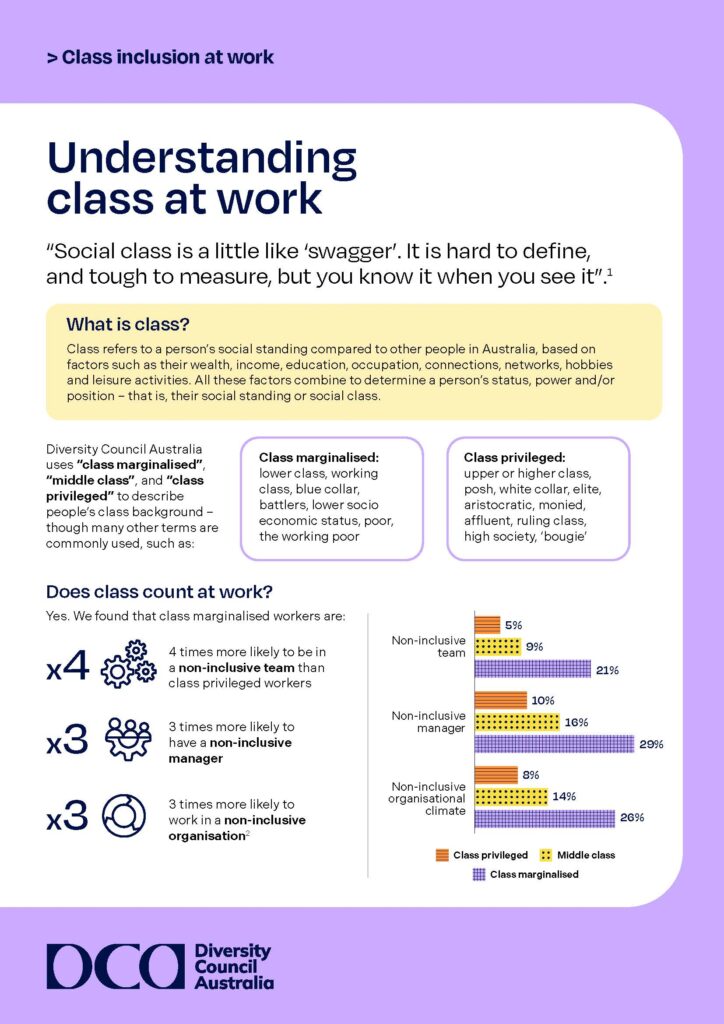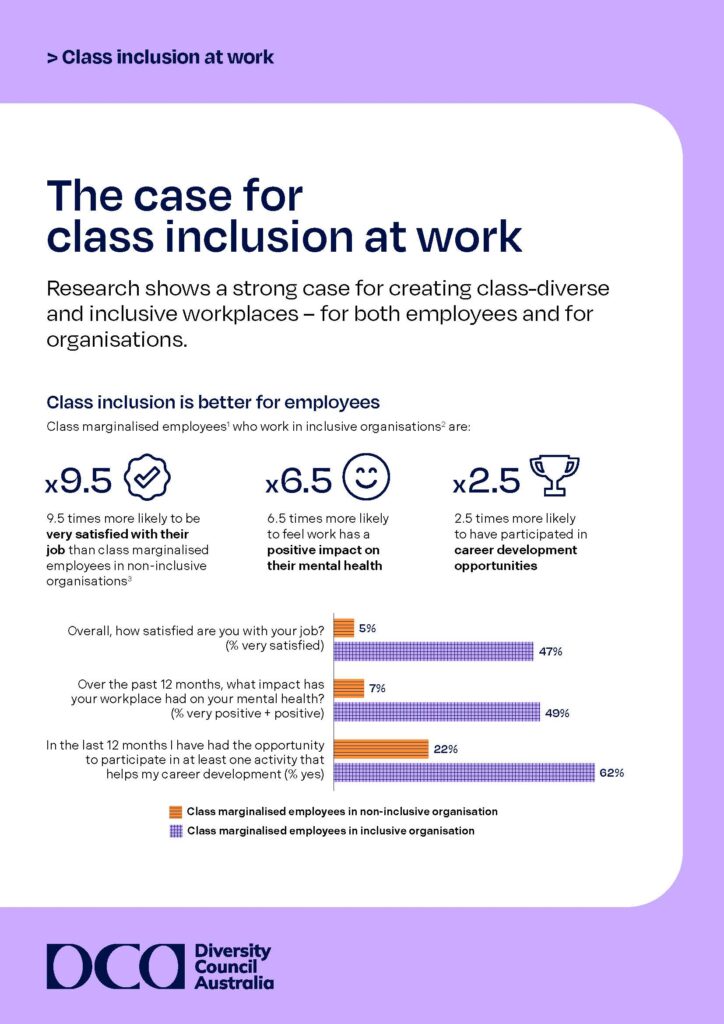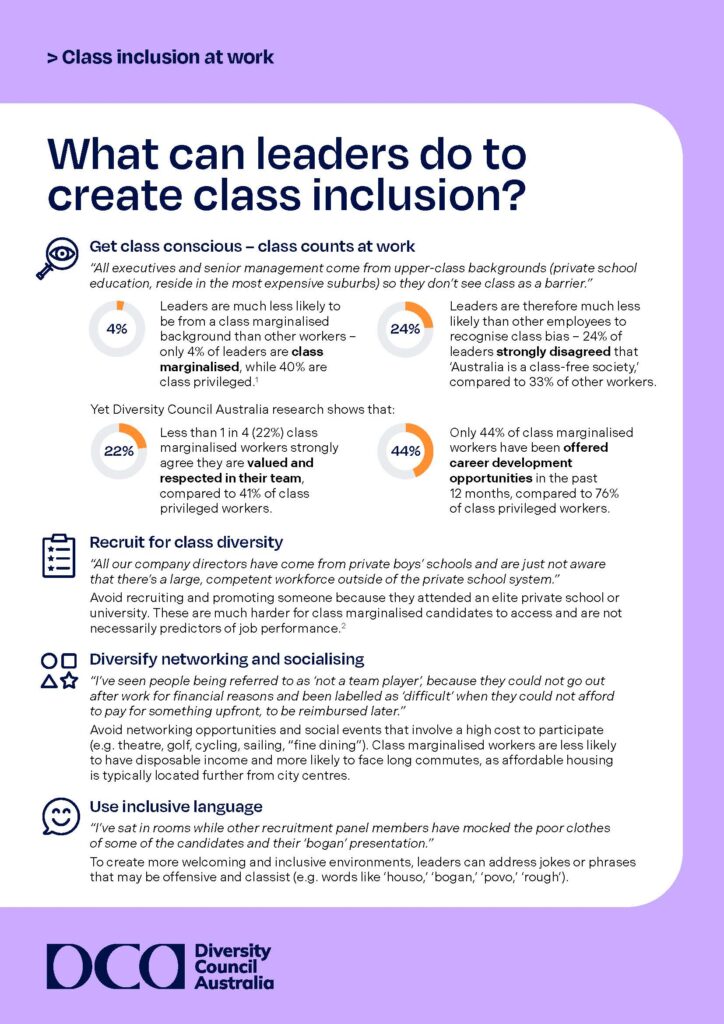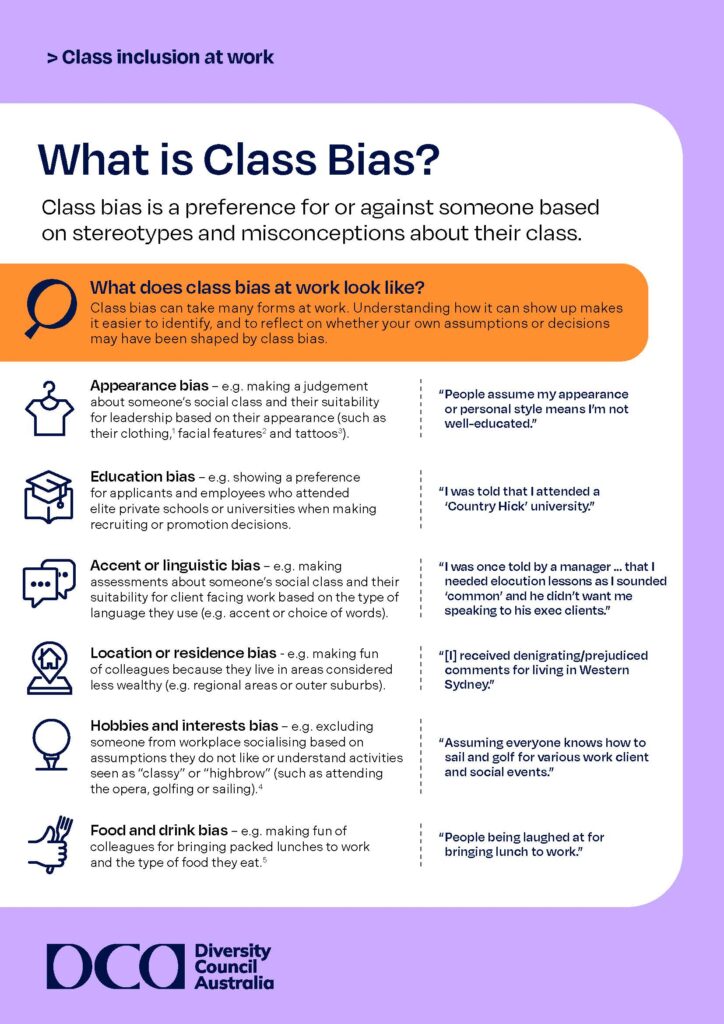How organisations can recognise and respond to classism and bias in the workplace
What is class?
Class refers to a person’s social standing compared to other people in Australia, based on factors such as their wealth, income, education, occupation, connections, networks, hobbies and leisure activities. All these factors combine to determine a person’s status, power and/or position – that is, their social standing or social class.
Diversity Council Australia uses “class marginalised”, “middle class”, and “class privileged” to describe class backgrounds.
Class counts at work
Research shows a strong case for creating class-diverse and inclusive workplaces – for both employees and for organisations.
Class marginalised employees¹ who work in inclusive organisations² report higher job satisfaction, mental health, and participation in career development than those in non-inclusive organisations. Class inclusion at work is also linked to organisational benefits, including increased innovation, effective teamwork, and employee retention.
Key findings
Research shows a strong case for creating class-diverse and inclusive workplaces – for both employees and for organisations:
- Class marginalised workers are significantly less likely to experience inclusion at work, with 21% reporting their team is non-inclusive compared to just 5% of their class privileged peers
- Almost two-thirds (63%) of survey respondents disagree that “in Australia, anyone can get a job and do well in their career regardless of their class background,” and just 7% agree Australia is a class-free society
- Respondents report feeling they had to change how they speak, dress or present themselves in order to progress at work
- Nearly 4 in 5 (79%) class marginalised workers say their social class is a barrier to accessing professional networks, mentors or sponsors
- Regardless of their class, more than 3 in 4 (79%) respondents agree organisations must take action to address social class exclusion.
Lock and key approach
Class Inclusion at Work provides five organisational locks and keys to help organisations:
- build foundational knowledge on social class
- make the case for change in their workplaces
- take practical steps towards class inclusion
Class Inclusion at Work infographics
Understanding class at work
The case for class inclusion at work
What can leaders do to create class inclusion?
What is class bias?
Definitions of class and why it counts in the workplace.
Research shows a strong case for creating class-diverse and inclusive workplaces – for both employees and for organisations.
A snapshot of actions executives and management can take to create inclusive workplaces.
What class bias at work looks like and how organisations can address class bias.
DCA thanks Herbert Smith Freehills Kramer for sponsoring the Class Inclusion at Work launch event
Want to use our research?
Materials in this document are © Diversity Council Australia Limited, 2025 and come under our Terms of Use and Privacy Statement. If you wish to use any content in this report, please contact us at research@dca.org.au to seek consent.
Where you refer to our research publicly, you must correctly attribute it to DCA. We require formal attribution for all written references to our research material. Citing DCA as a source will suffice where the reference is verbal.
Suggested citation:
Diversity Council Australia (R D’Almada-Remedios, F Laffernis, and J O’Leary), Class Inclusion at Work, DCA, Sydney, 2025.
To request an accessible alternative format of any document, please email admin@dca.org.au. Please let us know which format you need and for which document. While DCA will do its best to provide you with the alternative you need, please be aware that not all formats may be available.
Member-only content
Gain full access with DCA membership!
If your organisation has just signed up, your access will be activated as soon as payment is received.
¹ We have reported on class marginalised employees because our research shows they are much less likely to work in inclusive environments than middle class or class privileged employees. However, the pattern that greater inclusion benefits both employees and business also holds true for middle class and class privileged workers.
² Inclusive Organisational Climate = Respondents scored their organisation on average 4 or above out of 5 (where 5 = highly inclusive, 3 = neither inclusive nor non-inclusive, 1 = not inclusive at all).




